Ustka 2024-08-30
Ustka Railway Station.
Geographic coordinates: 54.578N 16.861E. Elevation 1 m.
Ustka railway station is located in the Pomeranian Voivodeship. It currently has the category of a tourist station. In 2022, the station served up to 1,300 passengers per day, during the holiday season. Ustka railway station is located on the railway line No. 405 Piła Główna – Ustka Uroczysko. There are two platforms and three platform edges at the station. There is a historic station building from 1911 at the station. In the past, Ustka station was a junction station and from it led the routes to the Ustka – Sławno and Ustka – Komnino sections.
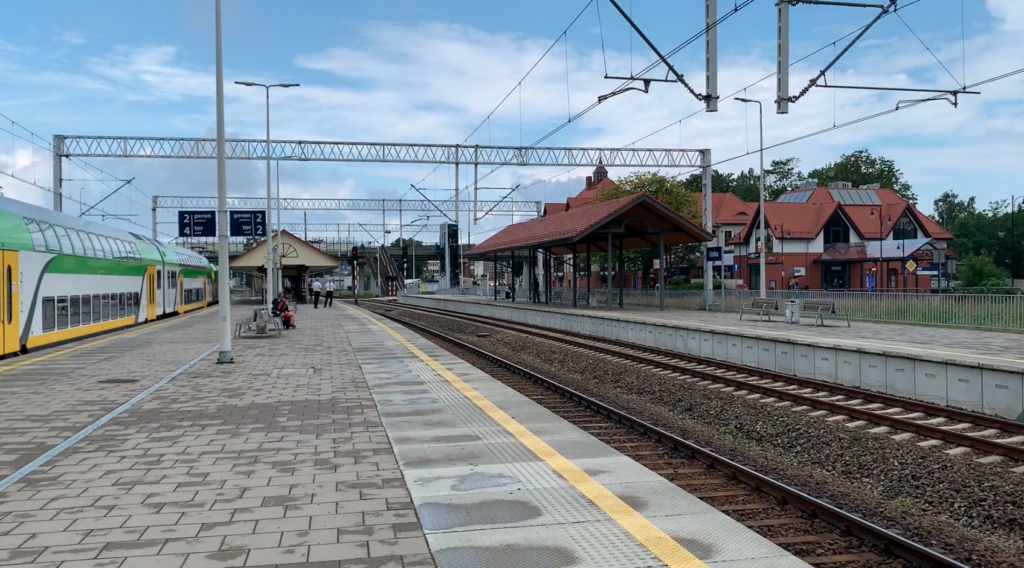
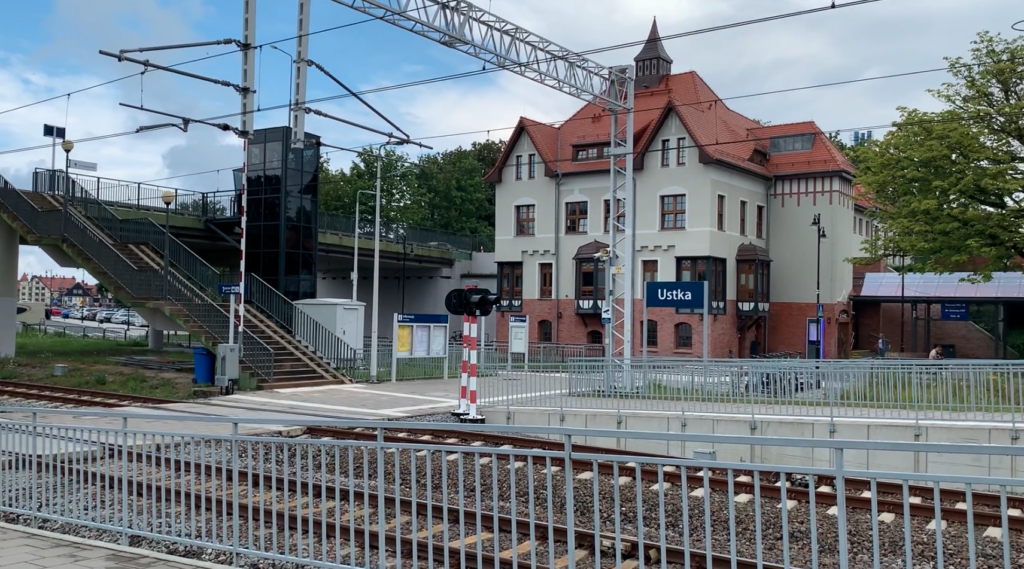
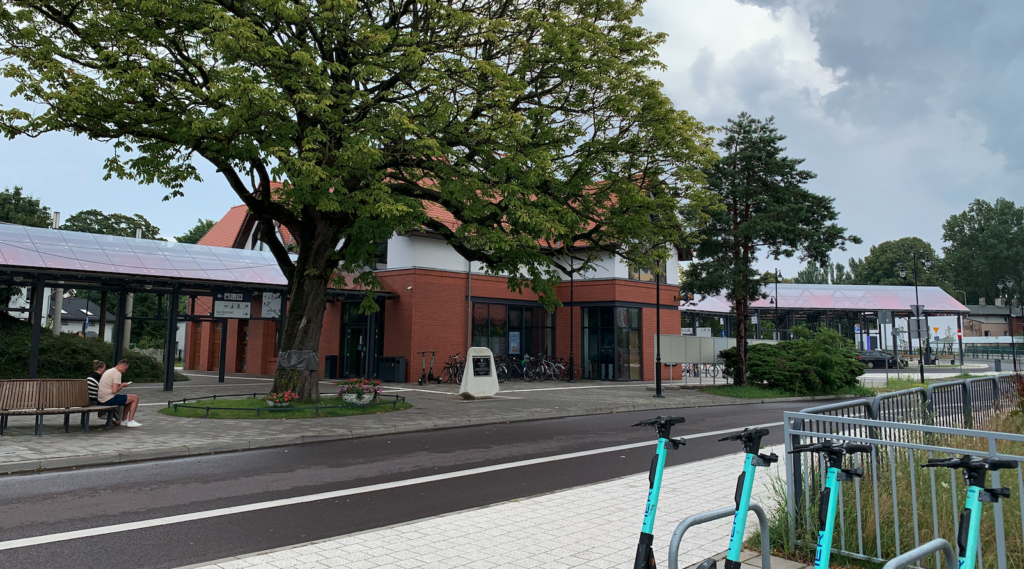
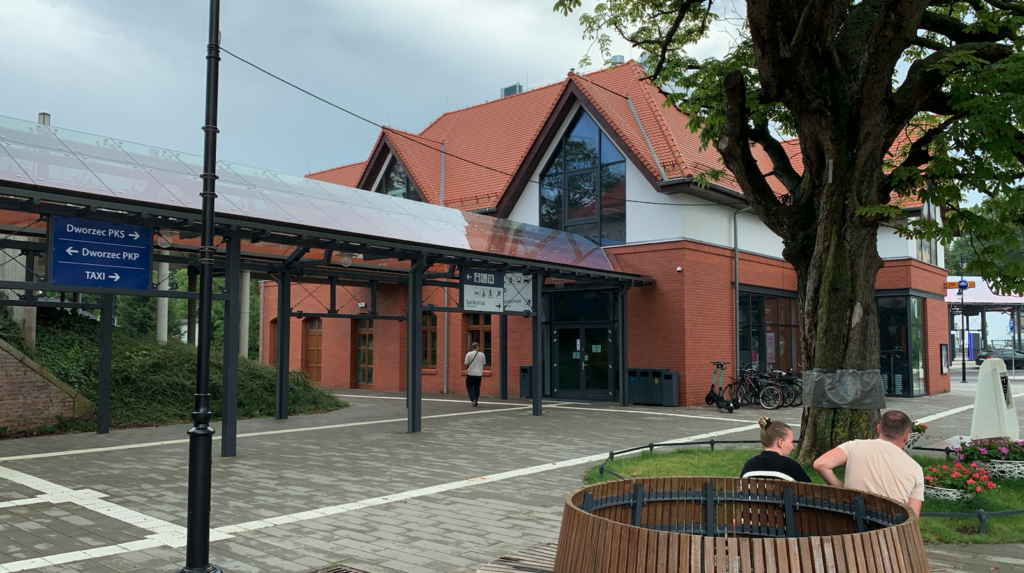
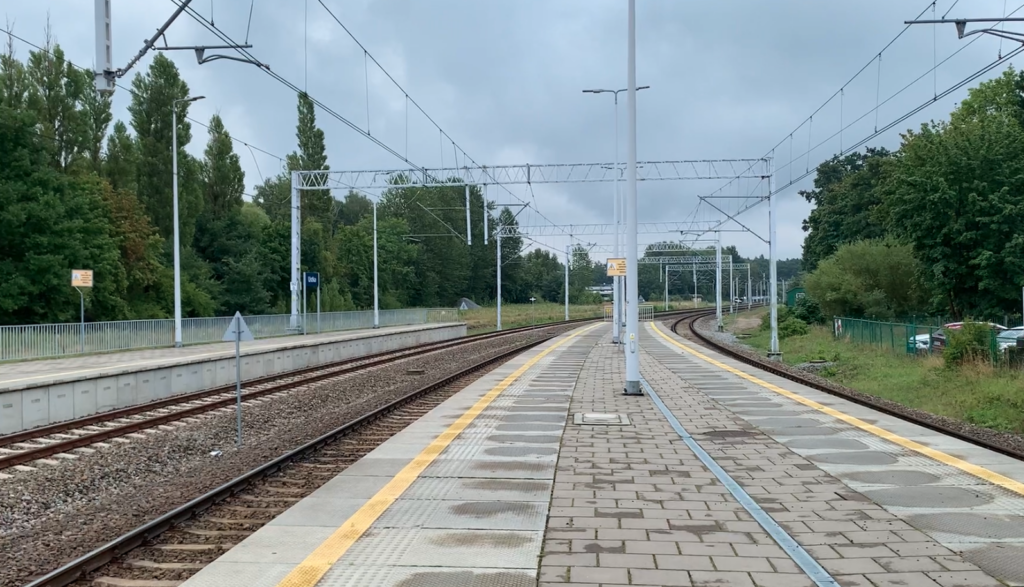
History of the railway in Ustka.
The railway line to Ustka was brought on October 1, 1878. Railway line No. 405 Piła Główna – Ustka was built in stages. On May 15, 1879, the Piła Główna – Piła Północ – Szczecinek section was opened. On October 1, 1878, the Szczecinek – Ustka section was opened. After 1890, the Ustka – Ustka Uroczysko – Sławno side section was launched, to LK No. 202.
On December 30, 1989, the Piła Główna – Szczecinek section was electrified, and on December 18, 1990, the Słupsk – Ustka section. On December 15, 2019, the Ustka – Ustka Uroczysko section was electrified. The remaining part of LK No. 405 Szczecinek – Słupsk remains unelectrified and there are no plans for electrification.
The first station in Ustka was opened in 1878 and was a temporary station. The station is known only from postcards. The station was to be used mainly for transporting goods from the seaport in Ustka to Słupsk. It quickly turned out that summer visitors started using the trains. The distance of 17 km, on the Słupsk – Ustka section, was covered in 30 – 40 minutes. At that time, a horse-drawn stagecoach covered this distance in about 1 hour 15 minutes. The trains consisted of 30 wagons. In the 1920s, Ustka had a rail connection with cities such as Berlin, Dresden, Wrocław, Munich.
Due to increased needs, a decision was made to build a new station. At that time, the rail-road crossing along Bahnhofstraße street was replaced with a viaduct, which was a truss, made of steel. Currently, the viaduct is crossed by national road No. 21 (Dworcowa Street). The viaduct is made of reinforced concrete.
The new station was designed in 1909. The station was inspired by the architecture of Alpine buildings. This style, referring to Tyrolean and Bavarian architecture, is characteristic of buildings erected in mountainous regions, as well as in seaside resorts, where it was wanted to give the buildings a specific, picturesque character. Characteristic elements of such architecture are: Sloping roofs with a large inclination. Wooden verandas and balconies, often richly decorated. Decorative gables and facades, which may resemble the “chalet” style, which is typical of Alpine summer houses. Brick details and the use of natural materials, which were to refer to regional architecture and harmonize with the surrounding landscape. This style, transferred to the seaside Ustka, was to emphasize its character as a health resort. The inspiration from Alpine architecture gave the building a unique, picturesque appearance, which was to attract tourists, creating an atmosphere of luxury and relaxation. The characteristic feature of the building is the entrance at the platform level and the entrance at the road viaduct level. The building was made of bricks that came from a brickyard in Masuria. The building has four storeys. The building had three passenger ticket offices and one goods ticket office. There was also a restaurant, telegraph rooms and a post office. Some of the rooms were designated for apartments. The construction of the station in Ustka was completed in 1911.
Nearby, at today’s Słupska Street, around 1910, a new local railway station was built, which served rail connections to Smołdzino and Główczyce. Initially, this railway had a 750 mm gauge. Later, the gauge was increased to a standard gauge of 1435 mm. In 1945, Soviet “trophy” units dismantled these lines and tracks, and took the switches and railway equipment to Moscow. The malicious Soviets said that these items were taken for galvanizing. The buildings of this station were converted into a warehouse and other utility rooms. Around 2000, a bicycle path was created along the sfarotorz to Smołdzino; the Rolled Tracks Trail.
Modernization of the Ustka communication center.
In 2018, it was decided to modernize the railway station and transform the adjacent areas into a transport hub. The revitalization of the railway station was carried out in the period 2019-2021.
The station was renovated in 2021 and then the wooden turret returned to the roof of the building. A clock was installed at the entrance. The four-story building of the railway station has a total usable area of 664 m2. The station building at the viaduct level houses the Tourist Information, luggage storage and ticket offices.
A bus station with platform area was built next to the station. The new three-story building of the bus station has an area of 334 m2. It has a solar installation and a heat pump for utility water. The newly constructed building has a waiting room, toilets, audio and video passenger information. There is general access to Wi-Fi. Three covered platforms were made for buses.
A TAXI stop was also built. Car parks were built (258 spaces) and three bicycle shelters with a bicycle repair station. New greenery was also planted, including 145 trees and 5,900 shrubs and flowers.
The track layout was changed on the station level. The unused tracks on the north side were eliminated. Both platforms, which were raised, were rebuilt. The historic wooden roof was renovated on Platform 2. A similar roof was erected on Platform 1. Each platform is 270 m long. Access to the platforms is via stairs from the viaduct or by elevator and at the track level, where barriers and traffic lights were installed. Rail traffic is serviced from the “Us” signal box, which is located at the northern head of the station. The communication hub was built without barriers for people using wheelchairs and with prams.
The construction of the communication hub was piloted by the mayor of Ustka, Mr. Jacek Graczyk. Currently, the communication hub is named after Mr. Jacek Graczyk. The hub was officially opened in 2021. The investment cost was PLN 47 million.
Written by Karol Placha Hetman
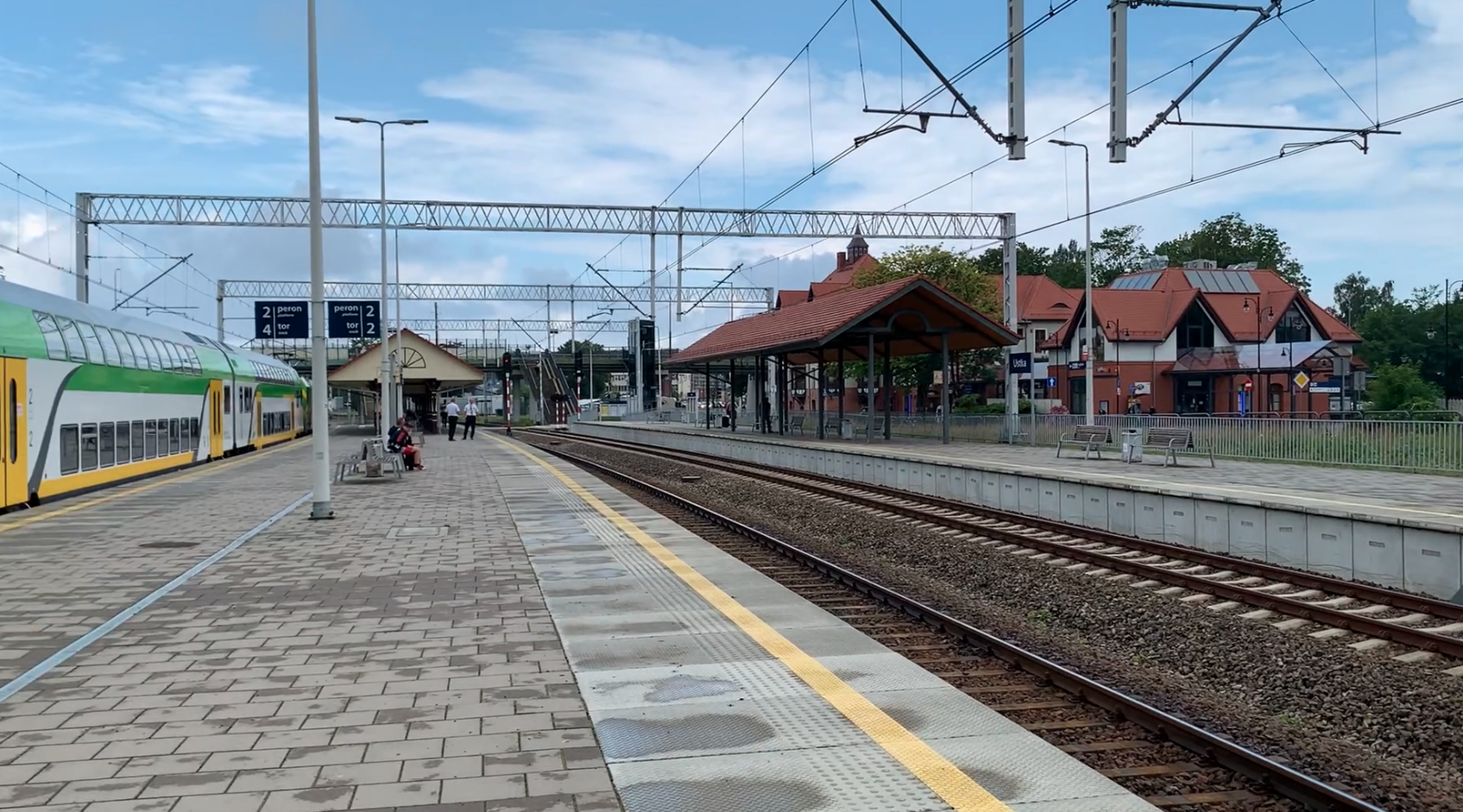
Leave a Reply
You must be logged in to post a comment.